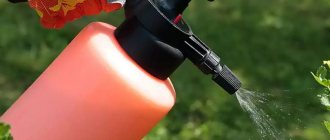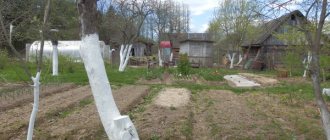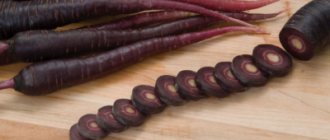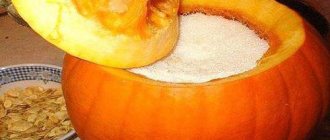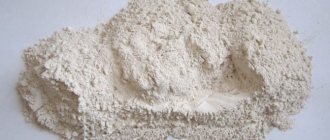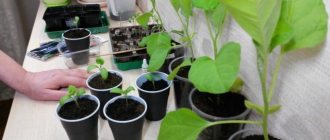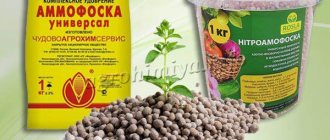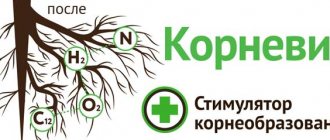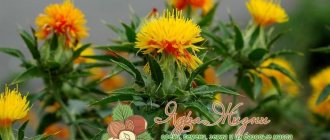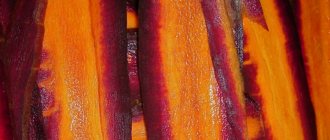Every year, with the beginning of the summer season, gardeners begin to look for effective means to protect the garden from pests and fungal diseases.
Many drugs change each other year after year in the garden medicine cabinet. But there are means that are used everywhere and constantly. Dear readers!
For you, we have created communities on social networks in which useful articles and interesting ideas are published several times a day! Subscribe and receive useful content in a convenient format! In this article we will talk about one of these drugs. This Bordeaux mixture is an indispensable assistant and friend of every gardener.
What is Bordeaux mixture
Bordeaux mixture is a preparation that is prepared from Bordeaux mixture.
REFERENCE. Often the terms Bordeaux mixture and Bordeaux mixture are equivalent. We will also adhere to this assumption.
So, Bordeaux mixture (Bordeaux) is a fungicide, that is, a drug intended to combat pathogenic microflora, or simply, fungi.
Bordeaux is usually produced in the form of a powder (copper sulfate and lime are included separately in a bag) or a ready-to-use concentrate. The drug has a characteristic bright blue color - it is copper sulfate that colors the solution.
The product contains copper sulfate and calcium hydroxide. Copper does the main job of destroying fungal microorganisms, and calcium “restrains” it, preventing it from harming plants.
What does a solution look like when prepared according to all the rules?
The solution should be opaque, with a blue tint and have a neutral reaction to acidity indicators.
To check the reaction, you need to immerse a metal object in the suspension - the metal will turn red copper. If you are a more advanced gardener, add a litmus leaf to the composition. The color of the paper will change from blue to red.
Excess copper sulfate will give the prepared emulsion an acidic reaction and a greenish color. An acidic Bordeaux mixture will burn the leaf blade and the fruit of the plant; in the future, the green mass will crumble and the fruit will be covered with a net.
How and when to spray tomatoes and other vegetable and fruit crops
To treat tomatoes with Bordeaux mixture, it is preferable to purchase a garden sprinkler with a fine tip. Spraying is carried out 2-4 times a season, the interval between pollination should be at least 10 days to avoid the accumulation of copper in the ground. The last time to process trees or beds is 15 days before harvest.
When spraying, you should use a freshly prepared suspension; the procedure is best done with the first rays of the sun or after sunset to avoid burns on the leaves. Heavy dew, windy and pre-rainy weather will create unfavorable factors for plant treatment.
Bordeaux mixture is used to prevent and treat cucumbers from penosporosis (downy mildew).
Grapes should be sprayed with 3% Bordeaux mixture twice a year - in the spring and in the autumn after harvest. Before the shoots open, it is necessary to treat the vine to create a protective barrier against harmful spores and microorganisms.
Further treatment should be carried out with a 1% solution. After autumn pruning, the grapevine must be doused again with 3% liquid. In total, Bordeaux mixture can be used in the vineyard at least six times per season.
What is Bordeaux mixture used for?
Bordeaux mixture is needed to combat fungi (as well as bacteria and viruses) that infect crop plants. Microorganisms cause many diseases, including moniliosis, late blight, various rusts and rots, scab, coccomycosis, mildew, leaf curl, anthracnose, etc.
Bordeaux is also needed to prevent these diseases. The main damaging effect is exerted by copper compounds. They destroy pathogenic microorganisms at the cellular level.
Most often, fruit trees are treated with the mixture, but it can also be used to improve the health of shrubs and herbaceous plants (tomatoes, potatoes, peppers, eggplant, cucumbers, etc.).
Interestingly, plants treated with liquid are much less likely to become objects of attention to parasitic insects. Therefore, we can say that to some extent the Bordeaux mixture prevents the appearance of pests.
How is Bordeaux mixture used in gardening?
Bordeaux mixture is diluted with water. The drug dissolves quite poorly, so it is better to dilute the powder in warm water. Although now they sell ready-made concentrates in bottles, which can also be diluted in ordinary water.
First, the solution is prepared. Dissolve separately the required amount of lime and the required amount of copper sulfate. Then both solutions are mixed and the volume is adjusted to the working volume (how to prepare 1% and 3% solutions is described below).
Next, the working solution is poured into the sprayer and the plants are treated. Everything needs to be done in 1 day. The solution cannot be stored. It is also important to prepare the drug before use so that it does not lose its properties.
For fruit trees, it is better to prepare a 3% solution in the first half of spring, and a 1% solution thereafter. In late autumn, you can again treat with a 3% mixture. The volume of the drug for each tree is calculated individually. For a large apple tree you will need a whole bucket, and for a young apricot - 2 - 3 liters.
NOTE! The working solution is prepared as follows. The required amount of copper sulfate (blue powder) is diluted in one container. In the other - the required amount of lime (white powder).
Then the volume of liquid in each container is adjusted to the required volume. Strain the lime through several layers of gauze rolled up.
The last step is to pour the vitriol solution into the lime solution in a thin stream. Mix everything thoroughly and use. THIS IS THE MANUFACTURER'S ADVICE. DO NOT NEGLECT IT.
IMPORTANT! If necessary, reduce the volumes of water and powder. If you are unsure of your calculations, prepare the mixture according to the instructions given and discard the rest.
Table. How to prepare the solution
| Concentration | Amount of powder, g | Amount of water, l |
| 1% | 100 g vitriol + 100 g lime | 10 (5 + 5) |
| 3% | 100 g vitriol + 100 g lime | 6 (3 + 3) |
Do not process plums, cherries, apricots, peaches and other stone fruits during the growing season.
The grapevine is treated with a 3% solution until the buds of the crop swell. The fact is that copper slows down the development of grapes. Therefore, it is best to spray the vine in the fall.
Table. How to prepare the solution
| Concentration | Amount of powder, g | Amount of water, l |
| 3% | 100 g vitriol + 100 g lime | 6 (3 + 3) |
Shrubs are treated with the same solutions and at the same time as trees.
Vegetables and flowers are sprayed with a more gentle 1% solution.
Table. How to prepare the solution
| Concentration | Amount of powder, g | Amount of water, l |
| 1% | 100 g vitriol + 100 g lime | 10 (5 + 5) |
IMPORTANT! The drug should not be used near bodies of water.
Preparation of Bordeaux powder in two different ways
How to properly dilute Bordeaux mixture for spraying? To make this at home, purchase copper blue powder and lime from a gardening store. Proper preparation requires knowledge of the approximate proportions of the components used.
Important! Typically, the finished composition is stored for no more than 10 hours, but there is a method for extending the shelf life. To do this, add 5 grams of sugar to the solution. This extends the shelf life to up to a day, but after the allotted time, the Bordeaux mixture is disposed of or used for its intended purpose.
1% mixture: prepare it correctly
To prepare the liquid, you need to dilute it in 10 liters of cold water:
- Blue powder – 100 grams.
- Lime. You only need to take quicklime - 120 grams.
Let's get it right:
- Prepare the dishes. You can use products made of plastic, glass or baked clay.
- After heating 1 liter of water, pour it into the prepared container.
- Pour copper sulfate in a thin stream.
- We dilute the contents with cold water.
- If the lime has not been slaked, then we carry out this procedure in a liter of hot water. No need to use plastic containers.
- After complete dissolution, pour out the remaining water.
- The resulting two solutions must be filtered through a filter or fabric folded in several layers.
- At the final stage, combine the two mixtures with each other. Remember to stir the liquid when mixing the two solutions.
Preparation of 3% composition
To prepare a three percent solution, you will need to mix the drugs in other proportions:
- Quicklime – 450 grams.
- Copper sulfate – 300 grams.
- Cold water - 10 liters.
A high-quality Bordeaux mixture contains lime in sufficient quantities. The equivalent ratio of components is 1:3.5.
Application of Bordeaux mixture in spring
Typically, Bordeaux mixture is used in March in the spring. Use a 3% solution to destroy fungi and other pathogenic microflora that have not yet awakened from hibernation.
At the same time, the greenhouse is being treated. The main goal is to destroy all mold, pests, and also disinfect the room.
In the future, if treatment with the mixture is necessary, then a 1% solution is used.
Table. How to prepare the solution
| Concentration | Amount of powder, g | Amount of water, l |
| 1% | 100 g vitriol + 100 g lime | 10 (5 + 5) |
| 3% | 100 g vitriol + 100 g lime | 6 (3 + 3) |
Rules for treating the garden with Bordeaux mixture
The treatment is carried out after the leaves fall, on sunny days; during this period, pests gather in cracked bark or on dry branches for wintering. First, you need to remove all leaves, trim dry or diseased branches, and remove weeds.
Spray with a 3% mixture, this will remove all pests and get rid of diseases. In the spring, repeat treatment with a weaker solution.
How to dilute Bordeaux mixture, step by step instructions
The most popular solutions of Bordeaux mixture are 1% and 3%. They are used in the vast majority of agrotechnical activities related to plant processing. Consider recipes for preparing 1% and 3% Bordeaux mixture.
IMPORTANT! You need to mix lime powder and copper sulfate separately in different containers and only then pour the mixtures into a common container.
How to prepare 1 percent Bordeaux mixture
1% is the most gentle solution of Bordeaux mixture. It is used during the growing season of plants.
If you prepare the Bordeaux mixture yourself, then for a 1% mixture you need 10 liters of water, 100 grams of vitriol and 100 grams of lime.
Each powder is diluted in its own container. The liquid norm is 5 liters.
IMPORTANT! To prepare solutions, use warm water (but not hotter than 50 degrees). This way the lime and copper sulfate will dissolve better. Also, before final mixing, strain each solution through cheesecloth or a sieve to prevent the sprayer from clogging.
Another secret - dilute each powder in a small amount of water, and then add liquid to the required volume.
How to make a 3 percent solution of Bordeaux mixture
A more concentrated 3% solution is used in early spring, while the plant is still dormant.
If you prepare the Bordeaux mixture yourself, then for a 3% mixture you need 6 liters of water, 100 g of vitriol and 100 g of lime.
Each powder is diluted in its own container. The liquid norm is 3 liters.
IMPORTANT! To check the concentration of the product, lower an iron object into a container of Bordeaux mixture. If the color has not changed, then everything is in order with the solution. If the metal turns red, then you need to add more lime solution.
Some summer residents take a little more lime to prepare the mixture (150 grams instead of 100). You can first prepare the mixture according to our recipe, and then, if necessary, add lime.
Vegetables
- Tomato. Spraying with a 1% solution of Bordeaux mixture prevents the development of late blight. This factor is not influenced by how they will be grown - in open or closed ground. Irrigation of bushes is carried out 4 times per season. The standard consumption rate of the drug is 2 liters per 10 m2.
- Cucumbers. The consumption is identical, but the number of sprays is reduced by up to 3 times.
- Bakhcha. 3 treatments per season are sufficient with a consumption of the product of 1 liter per 10 m2.
- Potato. Liquid consumption is similar to melon spraying. Although the number of treatments increases significantly - up to 14 times.
- Beet. 3 times per season creates protection against powdery mildew and circospora.
How to treat the soil with the mixture
Another advantage of using Bordeaux mixture is that the soil can be treated with the drug. It is no secret that the soil becomes the habitat of a wide variety of pathogenic microflora. Fungal spores and bacteria accumulate here, and larvae of various pests swarm. Early spring and late autumn soil treatment will destroy all infection and thus disinfect the soil.
Planned treatment is carried out with a more concentrated 3% solution. But if necessary, it is better to dilute a weaker 1% solution during the season.
Table. How to prepare the solution
| Concentration | Amount of powder, g | Amount of water, l |
| 1% | 100 g vitriol + 100 g lime | 10 (5 + 5) |
| 3% | 100 g vitriol + 100 g lime | 6 (3 + 3) |
Advantages and disadvantages of the product
Bordeaux has undeniable advantages:
- It is very inexpensive and available everywhere.
- The drug is extremely easy to use.
- You can prepare Bordeaux mixture yourself from copper sulfate and quicklime.
- The product protects crop plants for a long period of time.
- Resistant to precipitation.
- Has a high percentage of effectiveness, destroying most known pathogens.
- Relatively harmless to plants.
- Does not pose a danger to bees.
ON A NOTE. The last two advantages are valid only if the concentration of the active substance is observed.
The drug has very few disadvantages, but they are:
- The dry mixture does not dissolve well in water and can clog the spray tubes.
- Stone fruits can only be processed in early spring or late autumn. Copper contained in Bordeaux wine has a strong effect on these crops.
- There is a high probability of causing harm to the plant if errors were made in preparing the drug.
- If you bought a dry solution, then you need to prepare it, observing the proportions of two different substances, while other preparations simply need to be filled with a certain amount of water.
- Copper can cause a chemical burn to the plant.
Security measures
- Do not neglect personal protective equipment. Copper is harmful to humans.
- Do not use the product during fruiting period.
- Do not use the product too often to avoid copper buildup.
- Fruits and vegetables should not be eaten for 15 to 25 days after treatment.
- It is forbidden to mix Bordeaux mixture with soap or other drugs.
- Treatment should be carried out in the early morning or late evening, when there is no wind.
Common mistakes
Despite the fact that Bordeaux has been known to summer residents for a very long time, some still make mistakes when using it. Let's look at the most common of them.
- The most important mistake is that the summer resident does not study the instructions for the drug.
- Wrong concentration. This is perhaps the most common mistake. In an effort to enhance the effect of the drug, the gardener increases the concentration of the active substance. As a result, the plants suffer. When using a copper-containing mixture, it is very important not to exceed the norm.
- Multiple treatments. Bordeaux does not need to be used too often. This product contains copper, which can accumulate in plant shoots and soil. This situation happens especially often. The mixture is processed. It's raining in the evening. And the summer resident sprays again the next day. There is no need to do this.
- Using an expired product . Bordeaux mixture can be stored for quite a long time (2 years), but it also expires. There is no need to use an expired product. The mixture is not so expensive that you risk your health and plants in the garden.
- Failure to comply with safety regulations. Summer residents mistakenly believe that Bordeaux is absolutely harmless. Actually this is not true. This is a concentrate of copper sulfate and calcium hydroxide. During work, it is imperative to protect your respiratory system and eyes, and in case of poisoning, consult a doctor immediately.
- The solution is prepared in a metal container. For preparation, use glass or plastic containers so that the copper does not react with the iron.
Answers to frequently asked questions
When to use Bordeaux mixture?
It is best when the trees are still sleeping or have already gone into hibernation. That is, early spring and late autumn. But treatment can also be carried out during the season. The main thing is not to spray the mixture on the fruits.
What concentration should I use?
During the growing season – 1%. During preventive treatment, it can be increased to 3%.
Can the soil be cultivated?
Yes, but don't get too carried away. Copper accumulates in the soil.
What is better: copper sulfate or Bordeaux mixture?
Bordeaux is safer and more effective. It's better to use it.
Is it possible to treat trees for pests?
The drug will have a certain effect in the fight against insects. But it is much better to use insecticides against pests.
Do I need to add soap for sticking?
In no case! Bordeaux mixture should not be mixed with soap and other fungicidal agents.
What you need to know to prepare a high-quality solution
When mixing the components, pay attention to the temperature of the water - it should be cold. Only at low temperatures do the crystals have the smallest size.
Once the solution has been prepared, do not under any circumstances re-dilute it with water.
Test before you start treating trees. To do this, lower the iron object into the prepared solution. If a red coating has formed on the metal, then it is considered to be of poor quality. This indicates an increased content of copper sulfate. By adding lime milk to the liquid, ensure that no red deposits form on the metal. Only in this case can the Bordeaux mixture be considered properly prepared. If you neglect this rule, there is a risk of leaving a burn on the leaves.
